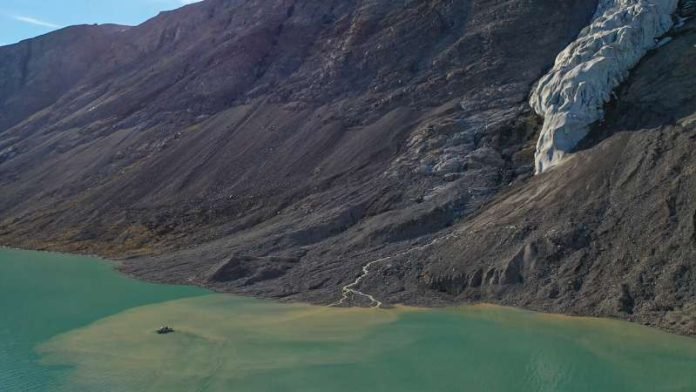
The Arctic Ocean, a realm of extreme conditions and profound beauty, is witnessing a dramatic transformation.
Over the past quarter-century, the Arctic’s summer sea ice has shrunk by more than 1 million square kilometers, leading to vast expanses of water that are now ice-free during the warmer months.
This significant change has sparked a flurry of scientific interest, as researchers seek to understand the implications of increased sunlight availability on the marine ecosystems of the far north.
Karl Attard, a marine scientist at the University of Southern Denmark, and his international team have delved into this question, focusing their attention on the Arctic Ocean’s shelf regions.
These shallow areas, which make up about half of the Arctic Ocean’s expanse, offer a unique opportunity to study how seafloor ecosystems respond to diminishing sea ice.
The team’s research, published in the Proceedings of the National Academy of Sciences, explores the complex interplay between sunlight, photosynthesis, and life in the Arctic’s marine environment.
Sunlight is essential for photosynthetic organisms, which form the base of the ocean’s food web, supporting everything from fish to polar bears.
Yet, despite the increasing areas of open water, the study reveals that the total amount of sunlight reaching the Arctic seafloor hasn’t increased as one might expect.
This counterintuitive finding is attributed to decreased water transparency across many parts of the Arctic Ocean. As ice melts, phytoplankton, sediments, and dissolved substances in the water rapidly absorb sunlight, preventing it from reaching the seafloor.
Additionally, the Arctic Ocean’s influx of river water, carrying particles and dissolved molecules from as far away as Mongolia and central North America, further clouds the waters and absorbs sunlight.
The research models show regional variations in primary production on the seafloor. While some areas along the coasts of Greenland and Canada are experiencing increased biomass production, much of the Russian continental shelf is seeing a decline.
This disparity raises questions about the specific drivers of change in these regions, suggesting that more observational data is needed to refine the models.
Interestingly, the study also predicts that seaweeds and eelgrass, traditionally hindered by ice cover, may find new opportunities to thrive in the increasingly ice-free and warmer Arctic waters.
These underwater vegetation fields could provide vital habitats for various marine species, marking a significant shift in the Arctic’s ecological landscape.
This research underscores the complexity of climate change impacts on the Arctic Ocean. While increased sunlight and warming waters might lead to a more productive marine environment, they also threaten to alter the region’s unique ecosystems irrevocably.
As the Arctic continues to warm, the potential influx of species from lower latitudes could further transform this polar environment, emphasizing the need for ongoing observation and study to understand and mitigate the effects of these profound changes.
The research findings can be found in PNAS.
Copyright © 2024 Knowridge Science Report. All rights reserved.



